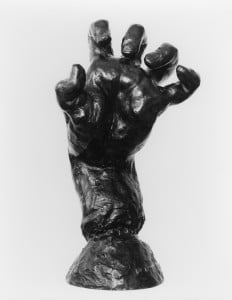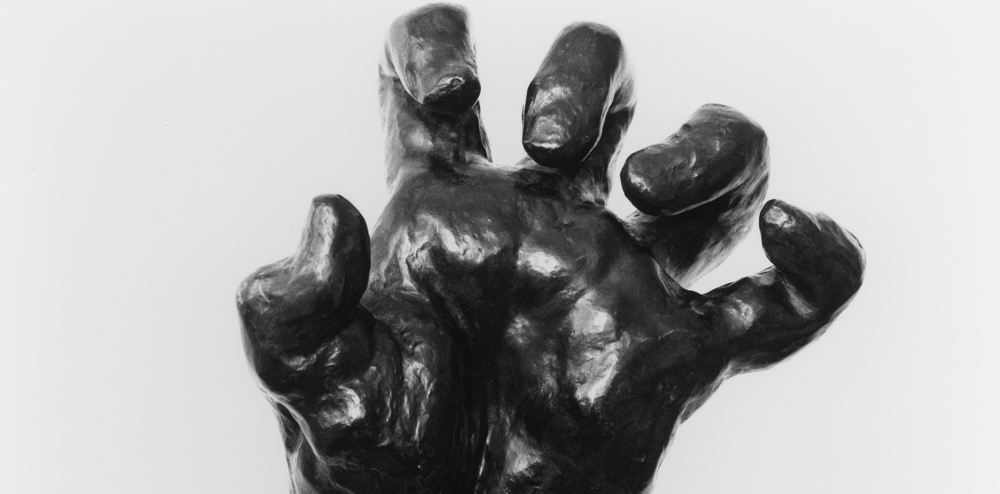
“Inside Rodin’s Hands: Art, Technology and Surgery,” a temporary exhibition at the Cantor Arts Center that opened last week, features Rodin hand sculptures which have been diagnosed for pathologies and virtually operated on. Anatomy texts published between the 16th and 19th centuries that illustrate the historical development of the study of anatomy are also on display, as are augmented reality installations that allow the public to view the anatomical structures that would lie inside some of the exhibited sculptures.
The exhibition emerged from collaboration between the Cantor Arts Center, Professor of Surgery James Chang ’87 and his students, the Division of Clinical Anatomy and the Lane Medical Library. It was inspired by what started for Chang, a professor and chief of plastic and reconstructive surgery, as a hobby 15 years ago.
As a surgery resident at the Stanford Hospital, Chang began noticing that most of Rodin’s hand sculptures appeared to portray conditions he was treating. For example, “Large Left Hand” seemed likely to have had fractured metacarpals— the bones connecting the wrist to the fingers— while “Large Clenched Left Hand” appeared to depict a hand affected by Charcot-Marie-Tooth disease, an inherited neurological disease. The former has even been virtually operated on by Chang and his students; visitors can observe the result of the virtual surgery through the aid of the technology developed by Associate Professor of Anatomy Paul Brown, exhibit production manager Matt Hasel and medical artist Sarah Hegmann.
Chang’s game of diagnosing the sculptures became a teaching tool that he has employed both with surgical trainees and with the undergraduates taking his introductory seminar, SURG 70Q: Surgical Anatomy of the Hand: From Rodin to Reconstruction. The supposed diagnoses made by Chang and his students accompany the exhibits.
The origins of using art as a teaching tool in the School of Medicine can be traced back to Professor Emeritus of Surgery Robert Chase, the founder of the Robert A. Chase Hand & Upper Limb Center. Not only was Chase the first to start giving regular tours and lectures on art and anatomy, which are still regularly offered today, but according to Brown, he was also a proponent of making a three-dimensional virtual representation of Rodin’s sculptures.
Chase’s idea led to a summer project involving Stanford scientists and high school students from the Bay Area, which resulted in the augmented reality feature of the exhibition. The hand sculptures were three-dimensionally scanned using a zebra-like pattern of light, and using previously existing data, Hegmann mapped the scanned sculpture to the anatomy of patients presenting the pathologies the sculptures had been diagnosed with. Using iPads mounted next to the sculptures, visitors can “look inside” the sculptures from any angle. Brown expressed confidence that this technology could lead to further advancements in the teaching of anatomy.
Auguste Rodin studied anatomy as part of his training as an art student. According to Bernard Barryte, the Cantor Museum’s curator of the Rodin collection, it is known for certain that the sculptor spent time at the Musee Dupuytren in Paris, which exhibits anatomical items presenting pathologies. Rodin started exhibiting sculptures that depicted fragments of the human body in the late 1880s; his extensive modeling of hands stemmed from Rodin’s perception of the hand as one of the most powerful means to convey emotion.
The exhibition falls very much in line with Cantor’s mission of “engag[ing] Stanford students from across disciplines, so as to broaden their overall education and world-view,” according to Connie Wolf ’81, director of the Cantor Arts Center. With such a high density of novel and interdisciplinary connections to be grasped by the audience, one can only wish the exhibition benefited from a richer diagnosis section and a larger space to accommodate the show.
“Inside Rodin’s Hands: Art, Technology and Surgery” is on view until Aug. 3, 2014 in the Halperin Gallery at the Cantor Arts Center.
Contact Silviana Ilcus at smci “at” stanford.edu.
